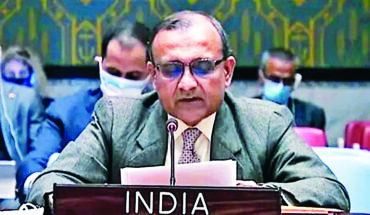The Monetary Policy Committee meeting will run from 4 to 6 December 2024, in which the most important issue of discussion will be the reduction in the repo rate, because the repo rate has remained at 6.5 percent for a long time, due to which the loan rate of banks remains at a high level and the loan uptake is low due to borrowing at expensive rates. Companies are short of capital and due to these economic activities in the country have slowed down.
During July to September 2024 or the second quarter of the current financial year, the gross domestic product (GDP) stood at 5.4 percent, which is the lowest level in the last 7 quarters. The main reason for the decline is the significant decrease in the growth rate in the manufacturing and mining sectors. The GDP growth rate in the first quarter was 6.7 percent, while the GDP growth rate in the second quarter of the financial year 2023-24 was 8.1 percent.
The Reserve Bank of India in its latest forecast has projected GDP growth rate at 7.2 per cent for FY 2024-25, 7 per cent for the third quarter and 7.4 per cent for the last quarter, while inflation has been projected at 4.5 per cent in FY 2024-25, 4.8 per cent in the third quarter and 4.2 per cent in the fourth quarter.
At present, the inflation rate remains at a high level, the reasons for which are global uncertainty, continuation of geopolitical crisis, unfavourable monsoon, high prices of food items, high prices of crude oil at the international level, etc. In October 2024, inflation was at a 14-month high of 6.21 percent, while in September 2024 it was at 5.5 percent. Thus, the average inflation rate in the last 2 months has been 5.9 percent.
The Reserve Bank of India last increased the repo rate by 0.25 basis points in February 2023, taking the repo rate to 6.50. Before the Corona epidemic, the repo rate was at 5.15 percent on 6 February 2020. The Reserve Bank cut the repo rate by 0.40 percent during 27 March 2020 to 9 October 2020. Subsequently, the Monetary Policy Committee increased the repo rate 5 times in its 10 meetings, while keeping the repo rate unchanged 4 times and once cutting the repo rate by 0.50 basis points in August 2022.
Even though the GDP growth rate has declined in the second quarter of the current financial year, global rating agency Moody’s has raised India’s GDP growth forecast for the calendar year 2024 to 7.1 percent from 6.8 percent and 6.1 percent earlier. Although Moody’s has kept India’s GDP growth forecast for 2025 unchanged at 6.5 percent, while the GDP growth rate forecast for 2026 is 6.6 percent, but these growth rates are better than many developed countries of the world.
Moody’s has projected inflation in India to be 4.5 percent and 4.1 percent in 2025 and 2026. Inflation plays an important role in determining one’s purchasing power. When inflation increases, the prices of both goods and services increase, which reduces the purchasing power of a person and reduces the demand for goods and services. Then, their sales decrease, their production decreases, the company suffers losses, workers are laid off, employment generation decreases, etc. As a result, economic activities slow down, and the pace of development is hampered. In such a situation, it would be appropriate to say that only by reducing inflation can the vehicle of development move forward at a fast pace.
The HSBC manufacturing PMI prepared by global rating agency S&P was 58.4 in November 2024, which was 58.5 in the month of October. At the same time, it was at the level of 56.7 in the month of September and 57.5 in the month of August. Although the PMI is 0.01 lower in November than in October, it is higher than in September and August. PMI being above 50 indicates that the manufacturing and service sectors are on a bullish trend. Also, a comparative study shows that the performance of the manufacturing and service sectors has declined in August and September. This is the reason why the GDP growth rate has been low in the second quarter of the current financial year, because the reason for the decline in GDP growth rate is the sluggishness in the manufacturing sector and the manufacturing sector contributes significantly to the GDP growth rate.
The repo rate has remained at 6.5 percent since February 2023, due to which the lending rate has also remained high. As of November 15, 2024, the loan uptake has come down to 11.1 percent, which was 20.6 percent in the corresponding period last year. The deposit growth rate has also come down significantly during this period and its average growth rate is just 6.7 percent since March. To compensate for the reduction in bank deposits, banks are redeeming government bonds before the maturity date. Due to the shortage of capital, the borrowing has also come down significantly, as the bank is facing difficulty in lending due to lack of capital.
At present, GDP growth rate has declined, and inflation has increased. Inflation is expected to remain within the tolerance limit set by the Reserve Bank of India in FY 2025 and FY 2026, but due to many adverse effects of inflation, the Monetary Policy Committee is refraining from cutting the repo rate.
Due to the repo rate remaining at a high level, the lending rate also remains at a high level, due to which retail and corporate loans are not able to increase and economic activities remain stagnant due to lack of capital, which is negatively affecting the growth rate. This is an important reason for the decline in GDP growth rate in the second quarter of the current financial year.
The central bank is keeping a close eye on the movement of inflation, as it is the biggest obstacle in the path of development, and it is also the cause of many types of adverse effects. Therefore, this time also the Monetary Policy Committee can keep the repo rate unchanged at 6.5 percent.
Satish Singh, Ahmedabad Based Senior Columnist, views are personal






